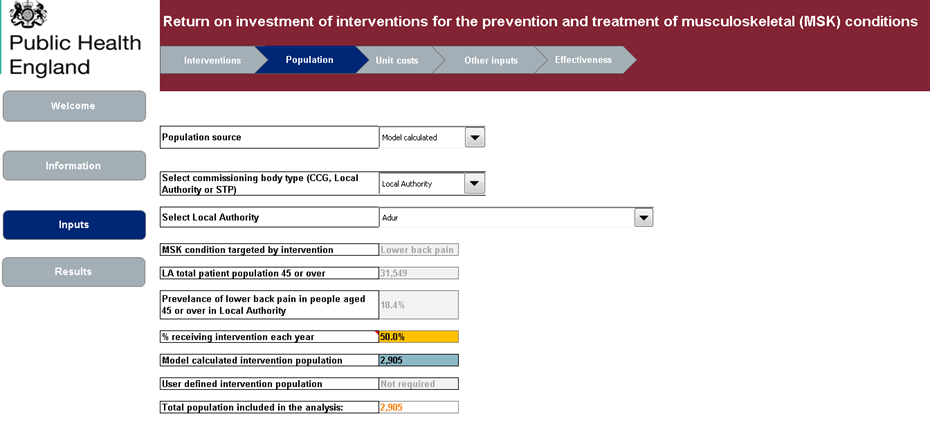
Musculoskeletal (MSK) conditions, such as osteoarthritis hip and knee, back pain and neck pain have a huge negative impact on the health of the population.
For both men and women, the leading cause of morbidity, as laid out in our Health Profile for England, is low back and neck pain, and this accounts for three times the level of morbidity of skin diseases which are in second place.
In 2014/15, 9.5m working days were lost due to work related MSK conditions, an average of 17 days lost per person living with the condition. This represents 40% of all days lost due to work-related ill–health, and 33% of long-term sickness absence in England is due to MSK conditions.
We know that with tighter budgets across the NHS and local and national government, it’s more important than ever before to make the strongest possible economic case for the work we do, and being able to calculate the return on investment (ROI) means decision makers can opt for the most cost-effective ways to improve and protect health.
The evidence for providing cost-effective interventions for preventing and treating MSK conditions is overwhelming. To help commissioners to do this, PHE has launched an ROI tool, produced by the York Health Economics Consortium, which tailors results to local areas, outlining what they can do to take action.
What does the tool do?
All interventions included in the tool, which is interactive and easy-to-use, are aimed at those of working age, covering back and knee pain specifically, and some interventions that cover MSK conditions generally. We’ve also published a report which outlines the methodology and main results from the tool.
The tool includes the following interventions:
- Cognitive behavioural therapy (CBT), including exercise – lower back pain
- STarT Back (Stratified risk assessment and care) – lower back pain
- Physiodirect (Self-referral to physiotherapy with initial telephone triage) – all MSK conditions
- Self-referral to physiotherapy – all MSK conditions
- Group yoga for back pain
- ESCAPE-pain for knee pain
- Vocational advice from physiotherapists in primary care

Who should use it?
We hope that the tool will provide practical, useable advice to NHS Clinical Commissioning Groups, Local Authorities and Sustainability & Transformation Partnerships; but it is relevant to anyone across local systems involved in commissioning MSK interventions.
By offering people cost-effective interventions, we can improve the health and ultimately lives of people who suffer with MSK conditions. By doing this, we can have a positive impact not only on health and wellbeing, but also on the workforce, economy and society as a whole.
Have you seen…
We recently published a ‘Health Economics Evidence Resource’ (HEER), which pulls together the best available cost-effectiveness and return on investment evidence from the literature to help both locally and nationally in developing the economic case for investing in prevention and focuses initially on the areas of the public health grant. This evidence will be updated annually and you can learn more about making the economic case for prevention in our previous blog.
